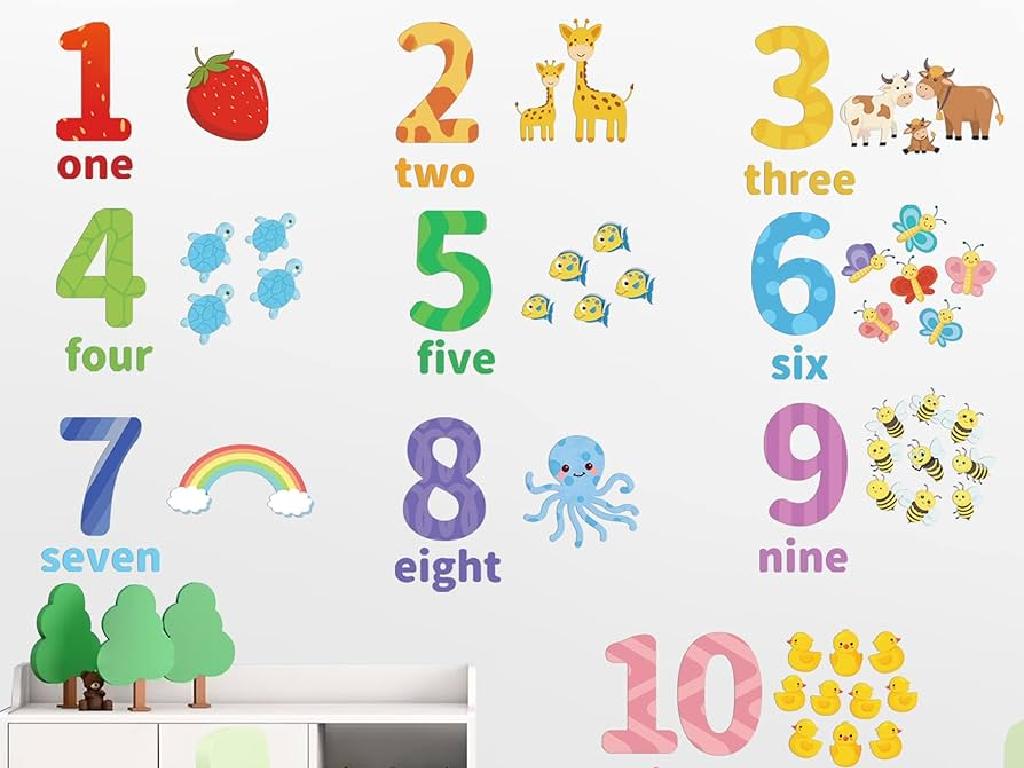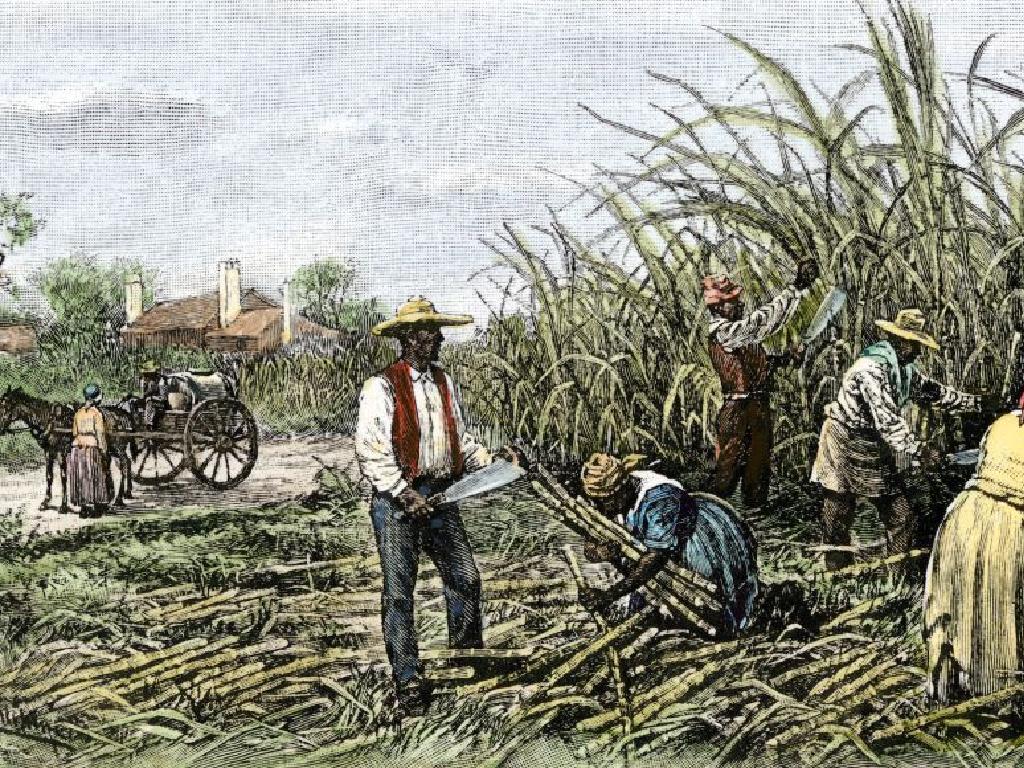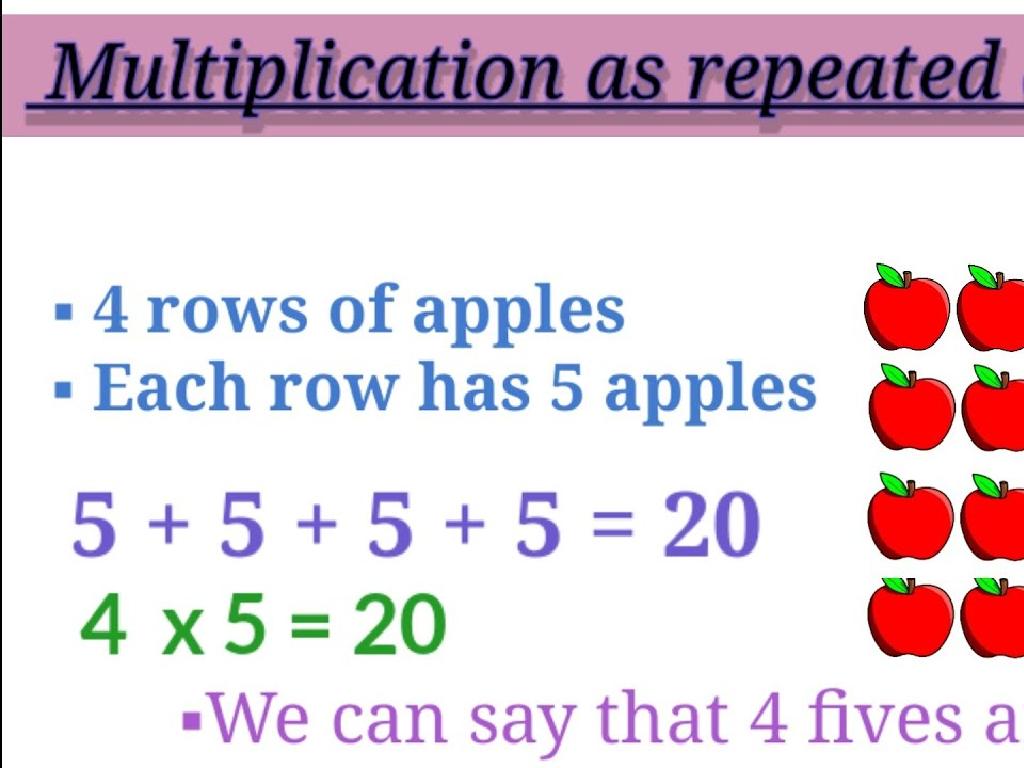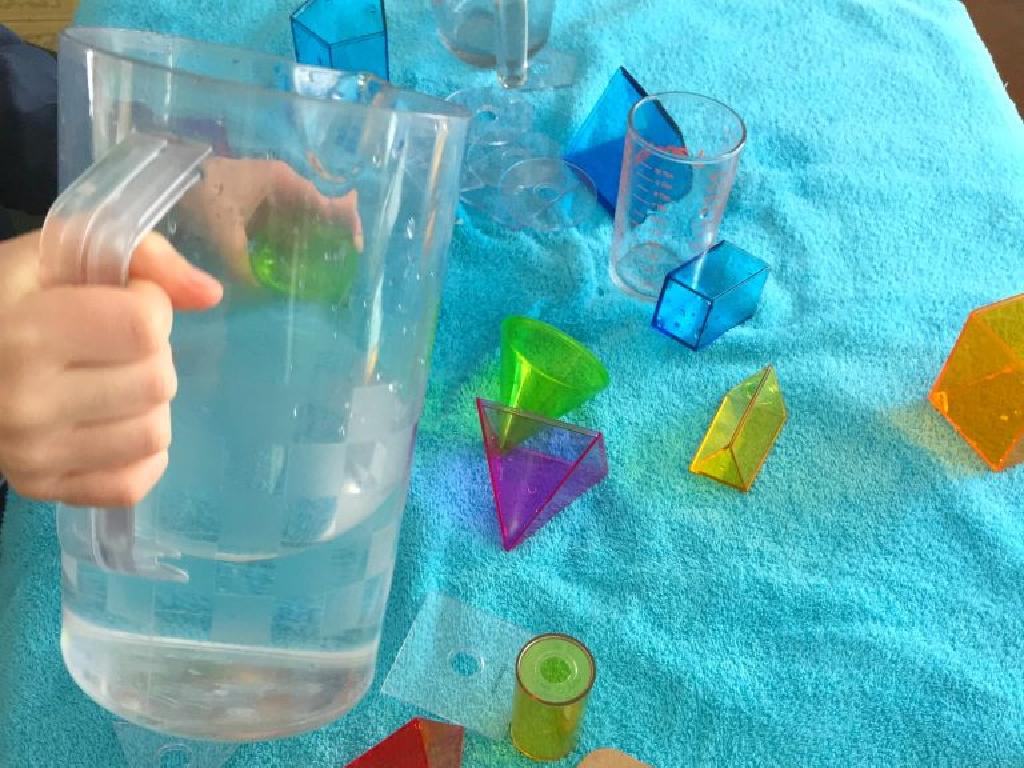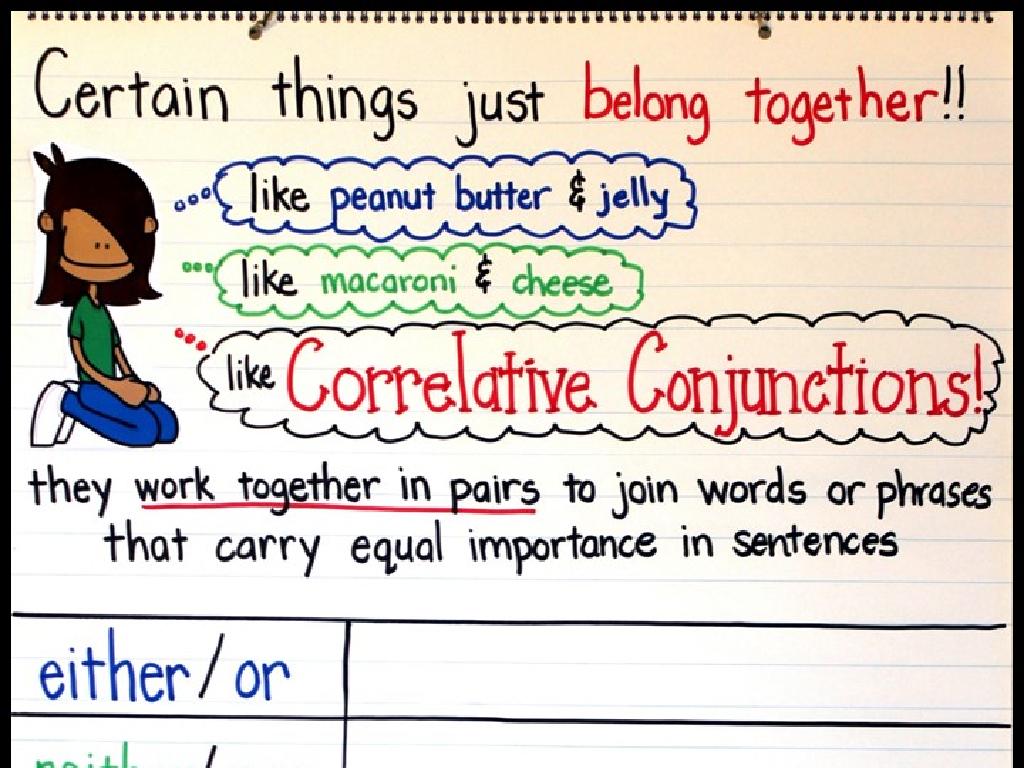Form The Singular Or Plural Possessive
Subject: Language arts
Grade: Third grade
Topic: Nouns
Please LOG IN to download the presentation. Access is available to registered users only.
View More Content
Forming Singular & Plural Possessives
– What are possessive nouns?
– Possessive nouns tell us who owns something.
– Showing ownership with nouns
– Add ‘s to a singular noun to show it owns something.
– Singular possessive examples
– For one owner: dog’s leash, girl’s book, teacher’s desk.
– Plural possessive examples
– For many owners: dogs’ park, girls’ team, teachers’ lounge.
|
Begin the lesson by explaining that possessive nouns are used to show that something belongs to someone or something. Emphasize that by adding an apostrophe and ‘s’ to a singular noun, we can show ownership. Provide clear examples by using common items that students can relate to, such as a dog’s leash or a girl’s book. Then, explain that for plural nouns that already end in ‘s’, we only add an apostrophe to show possession. Use examples like ‘dogs’ park’ to illustrate plural possessive nouns. Encourage students to think of their own examples and to understand the difference between singular and plural possessives.
Making Singular Nouns Possessive
– Add ‘s to a singular noun
– Example: cat becomes cat’s
– The toy belongs to the cat: The cat’s toy
– Example: girl becomes girl’s
– The book belongs to the girl: The girl’s book
– Practice forming possessives
– We’ll practice with more nouns in class!
|
This slide introduces the concept of singular possessive nouns to third-grade students. Start by explaining that when something belongs to someone or something, we show this by adding an apostrophe and ‘s’ to the end of a singular noun. Use clear examples like ‘cat’s toy’ to show possession. The examples provided should help students visualize how the possessive form changes the meaning of the sentence to show ownership. During the practice session, encourage students to come up with their own examples and write them on the board to reinforce the concept. Make sure to correct any misconceptions and provide positive feedback to build their confidence.
Plural Possessive Nouns
– Making plural nouns possessive
– Example: The boys’ room
– Shows something belongs to more than one boy
– Example: The children’s playground
– ‘Children’ is already plural, shows the playground belongs to them
– Plurals without ‘s’ add ‘s
– Like ‘children’, add ‘s’ to show possession for all plural nouns not ending in ‘s’
|
This slide is focused on teaching third graders how to form possessive nouns when dealing with plurals. Start by explaining that to show ownership by more than one person or thing, we make a noun possessive. For most plural nouns that end in ‘s’, we just add an apostrophe at the end (e.g., dogs’ bones). However, for plural nouns that do not end in ‘s’, like ‘children’ or ‘people’, we add an apostrophe followed by an ‘s’ (e.g., children’s playground). Use the examples provided to illustrate these rules, and encourage students to come up with their own examples. This will help them understand and remember how to form plural possessive nouns.
Possessives with Irregular Plurals
– Irregular plurals overview
– Possessive forms of irregular plurals
– Not all plurals end in ‘s’. For these, add an apostrophe + s to show possession.
– Examples: men’s, women’s, children’s
– ‘Men’ becomes ‘men’s’, ‘women’ -> ‘women’s’, ‘children’ -> ‘children’s’
– Practice identifying and using them
– Find irregular plurals in sentences and make them possessive.
|
This slide introduces students to the concept of forming possessive nouns from irregular plural nouns. Unlike regular nouns where we simply add an apostrophe + s (‘s) to the singular form, irregular plurals require students to understand that the plural form does not always end in ‘s’. After explaining the concept, use examples like ‘men’s’, ‘women’s’, and ‘children’s’ to illustrate how the possessive form is created. For the practice activity, provide sentences with irregular plurals and ask students to convert them into possessive form. This will help reinforce their understanding and give them practical experience with these exceptions in the English language.
Using Possessive Nouns in Sentences
– Forming singular possessive nouns
– Add ‘s to a singular noun to show possession, e.g., the dog’s leash
– Forming plural possessive nouns
– Add ‘ to the end of plural nouns ending in s to show possession, e.g., the teachers’ lounge
– Examples on the board
– ‘The cat’s whiskers are long.’ ‘The kids’ toys are in the box.’
– Class activity: Craft sentences
|
This slide introduces students to the concept of possessive nouns and how they are used in sentences to indicate ownership. Start by explaining the rules for forming singular and plural possessive nouns, with examples for each. Write example sentences on the board, highlighting the possessive nouns and discussing why they are used instead of ‘of’ (e.g., ‘the leash of the dog’). For the class activity, encourage students to think of items they own or things in the classroom and create sentences using possessive nouns. Provide guidance and ensure they understand the difference between singular and plural possessives. Possible activities: students could write sentences about their favorite book characters’ belongings, or they could describe items in a picture using possessive nouns.
Possessive Noun Scavenger Hunt
– Find items belonging to someone
– Write the possessive form of nouns
– Singular or plural possessive?
– Is it one owner (singular) or many (plural)?
– Share and explain your choices
– Tell us why you chose singular or plural form.
|
This class activity is designed to help students understand and apply the concept of singular and plural possessive nouns in a fun and interactive way. Have the students search the classroom for items that belong to their classmates or the school. Once they find an item, they should write down the possessive form of the noun that owns the item, deciding whether it should be singular or plural possessive based on the number of owners. Encourage them to think about whether the item belongs to one person (singular possessive) or more than one person (plural possessive). After the hunt, each student will share their findings with the class and explain their reasoning. This will reinforce their understanding of possessive nouns and provide practice in explaining their thought process. Possible items could be a teacher’s book, students’ desks, or the class’s pet.
Possessive Nouns: Review and Practice
– Reviewing possessive nouns
– What makes a noun possessive? Adding ‘s or just ‘
– Complete practice worksheet
– We’ll do a worksheet to practice making nouns possessive
– Get ready for a quiz game
– A fun quiz game is coming up – study your notes!
– Understanding ownership
|
This slide is aimed at reinforcing the concept of singular and plural possessive nouns. Start by reviewing the rules for adding ‘s to singular nouns and just ‘ to plural nouns that already end in s. Distribute the practice worksheet and go through a few examples as a class to ensure understanding. Let the students know that there will be a fun quiz game during the next class to test their knowledge, which should motivate them to study. Encourage them to bring any questions they have to the next class. The goal is to make sure students can confidently form possessive nouns and understand the concept of ownership in grammar.

